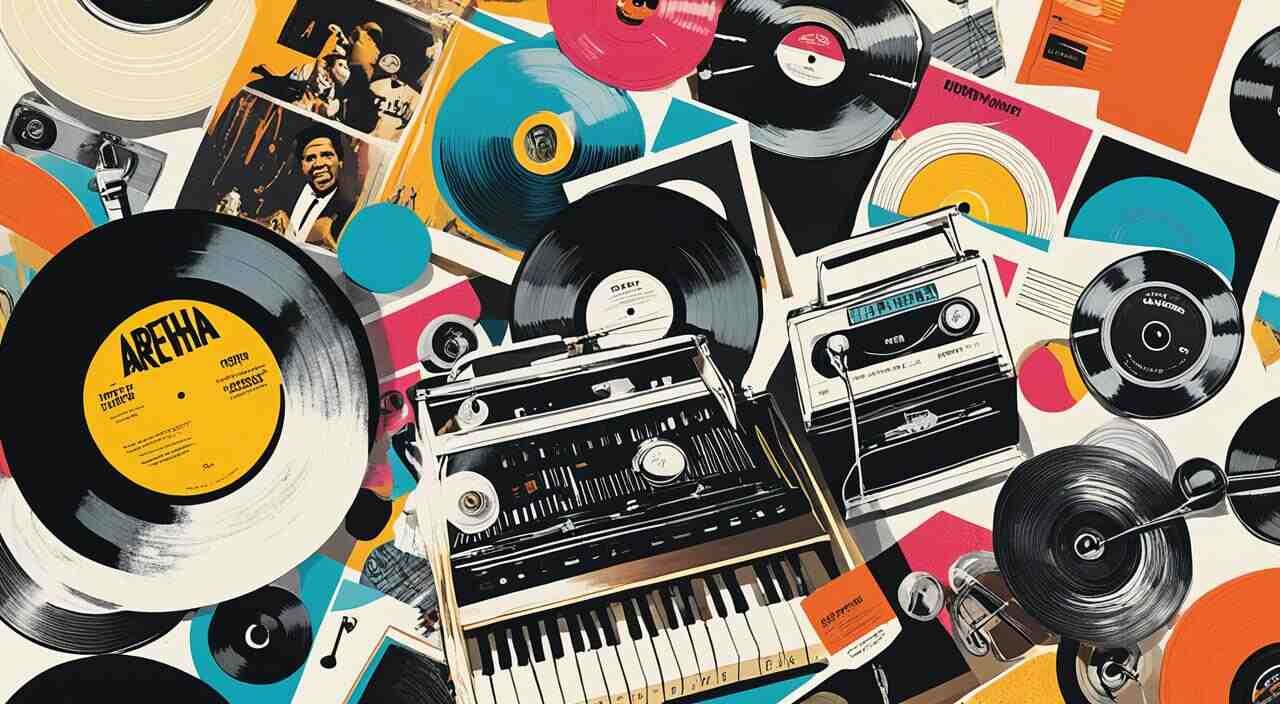The vinyl revival, also known as the vinyl resurgence, is a phenomenon characterized by the renewed interest and increased sales of vinyl records. This resurgence began in 2007 and has been steadily growing since then, both in the Western world and East Asia. Vinyl records, made of polyvinyl chloride, were the primary medium for music distribution from the 1950s to the 1980s, when they were largely replaced by CDs. However, in 2007, vinyl sales started to rise again, and by the early 2010s, the growth of vinyl records became significant.
While vinyl records still make up a small percentage (less than 6%) of overall music sales, their popularity has been soaring in recent years. The vinyl revival peaked in the 2020s, with artists like Taylor Swift driving vinyl sales. For example, Taylor Swift’s albums “Midnights” and “1989 (Taylor’s Version)” have achieved significant vinyl sales milestones.
In addition to increased vinyl sales, the vinyl revival has led to the creation of annual events like Record Store Day and the emergence of music charts dedicated solely to vinyl. There has also been a rise in the production of films that celebrate the vinyl record and its culture. Overall, the vinyl revival is a reflection of the enduring appeal and nostalgia associated with vinyl records.
Key Takeaways:
- The vinyl revival, or resurgence, refers to the renewed interest and increased sales of vinyl records.
- Vinyl records, made of polyvinyl chloride, were popular from the 1950s to the 1980s, then declined in popularity with the rise of CDs.
- Vinyl sales started to rise again in 2007 and have been steadily growing since then.
- Taylor Swift is one of the artists who helped drive the vinyl revival with significant vinyl sales.
- Annual events like Record Store Day celebrate vinyl records and their culture.
Reasons Behind the Vinyl Revival
There are several factors contributing to the vinyl revival, which defies the notion that it is solely driven by nostalgic baby boomers. In fact, the appeal of vinyl records extends to younger generations, particularly Gen Z, as evidenced by the top-selling vinyl albums being predominantly from current artists.
Vinyl records have become more than just a medium for music; they have transformed into a status symbol. Collecting vinyl requires time, effort, and thoughtful deliberation, making it a coveted and exclusive pursuit compared to the instant accessibility of digital music.
The tactile experience and collectibility of vinyl records have also played a significant role in their appeal. The act of flipping through album covers, carefully placing the needle, and experiencing the warmth of the sound creates a unique and immersive experience that cannot be replicated by digital formats.
Moreover, vinyl records are perceived to offer superior sound quality compared to digital audio files. While CDs and digital formats provide higher fidelity, vinyl enthusiasts argue that records capture the entire sound wave, resulting in a warmer, richer sound. This perception of enhanced audio quality contributes to the continued popularity of vinyl.
It’s worth mentioning that vinyl records can develop imperfections and sound artifacts with repeated use. However, these quirks are often embraced by collectors, as they add character and authenticity to the listening experience.
All in all, the vinyl format has retained its allure due to its appeal to younger generations, the status symbol associated with collecting, the tactile and immersive experience it offers, and the perceived superior sound quality.
Quotes:
“Vinyl records have become more than just a medium for music; they have transformed into a status symbol.”
Key Points:
- The vinyl revival appeals to younger generations, not just nostalgic baby boomers.
- Vinyl records have become a status symbol due to their exclusivity and collectability.
- The tactile experience of vinyl and its unique sound quality contribute to its enduring appeal.
- Vinyl records are seen as a symbol of quality and authenticity in the music world.
The Growth and Future of Vinyl Records
The vinyl record market has experienced significant growth and shows promising prospects for the future. Recent statistics demonstrate the resurgence of vinyl sales in various countries. In Germany, vinyl sales have been steadily increasing since the 1990s, reaching 4.2 million units sold in 2020. Japan has also witnessed a remarkable tenfold increase in vinyl sales from 2010 to 2020. Meanwhile, in the United Kingdom, vinyl sales have exceeded streaming audio revenue, with over 5 million vinyl records sold in 2021 alone.
The United States has also contributed to the vinyl record market growth, with a staggering 17 million records sold in the first half of 2021, generating $467 million in retail revenue. These statistics not only reflect the increased demand for vinyl but also highlight its enduring appeal among music enthusiasts.
While the growth of vinyl records is undeniable, it is not without challenges. Manufacturing vinyl records presents certain difficulties, especially with the production of lathe-cut records that require manual craftsmanship. These individually crafted records take more time and labor compared to traditional pressed records. As a result, the vinyl manufacturing capacity has faced strain. However, despite these challenges, the future of vinyl records remains promising.
Popular artists like Taylor Swift and Olivia Rodrigo continue to embrace vinyl as part of their marketing strategies, reaffirming vinyl’s role in the music industry. Vinyl records hold a special place in the hearts of music lovers, providing a unique and nostalgic experience that cannot be replicated by other formats. As technology advances, vinyl records are poised to maintain their significance, offering music enthusiasts a tangible connection to their favorite artists and timeless classics.
FAQ
Is the vinyl resurgence a real phenomenon?
Yes, the vinyl resurgence, also known as the vinyl revival, is a real phenomenon characterized by the renewed interest and increased sales of vinyl records.
When did the vinyl revival begin?
The vinyl revival began in 2007 and has been steadily growing since then.
Are vinyl records popular among younger generations?
Yes, vinyl records are popular among younger generations, with the top-selling vinyl albums predominantly from current artists.
What are the reasons behind the vinyl revival?
The reasons behind the vinyl revival vary, but include factors such as the tactile experience and collectibility of vinyl records, the perceived superior sound quality, and their status as a symbol of quality and authenticity.
What are the challenges in vinyl manufacturing?
Vinyl manufacturing faces challenges due to the increased demand, particularly for lathe-cut records, which require more labor and time compared to traditional pressed records.
How is the vinyl record market growing?
The vinyl record market is growing steadily, with increasing sales in countries like Germany, Japan, the United Kingdom, and the United States.
What does the future hold for vinyl records?
Despite manufacturing challenges, the future of vinyl records looks promising, with artists like Taylor Swift and Olivia Rodrigo embracing vinyl as part of their marketing strategies. Vinyl records continue to hold a special place in the music industry as a physical format that offers a unique and nostalgic experience for music lovers.








Leave a Reply